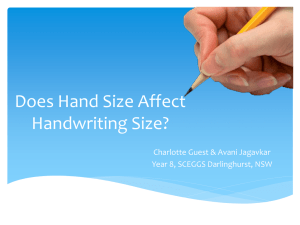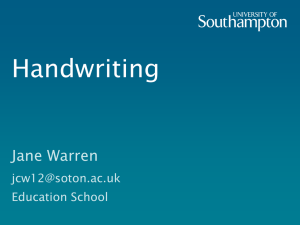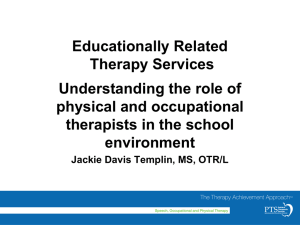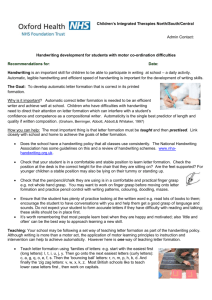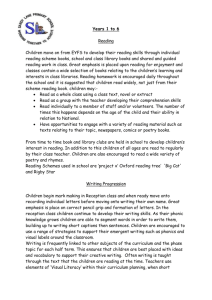Dawkins on Statistical Tests
advertisement
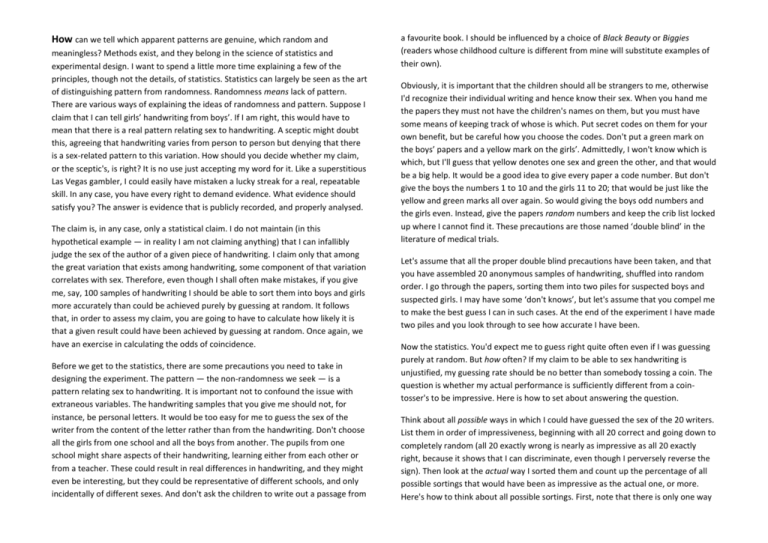
How can we tell which apparent patterns are genuine, which random and meaningless? Methods exist, and they belong in the science of statistics and experimental design. I want to spend a little more time explaining a few of the principles, though not the details, of statistics. Statistics can largely be seen as the art of distinguishing pattern from randomness. Randomness means lack of pattern. There are various ways of explaining the ideas of randomness and pattern. Suppose I claim that I can tell girls’ handwriting from boys’. If I am right, this would have to mean that there is a real pattern relating sex to handwriting. A sceptic might doubt this, agreeing that handwriting varies from person to person but denying that there is a sex-related pattern to this variation. How should you decide whether my claim, or the sceptic's, is right? It is no use just accepting my word for it. Like a superstitious Las Vegas gambler, I could easily have mistaken a lucky streak for a real, repeatable skill. In any case, you have every right to demand evidence. What evidence should satisfy you? The answer is evidence that is publicly recorded, and properly analysed. The claim is, in any case, only a statistical claim. I do not maintain (in this hypothetical example — in reality I am not claiming anything) that I can infallibly judge the sex of the author of a given piece of handwriting. I claim only that among the great variation that exists among handwriting, some component of that variation correlates with sex. Therefore, even though I shall often make mistakes, if you give me, say, 100 samples of handwriting I should be able to sort them into boys and girls more accurately than could be achieved purely by guessing at random. It follows that, in order to assess my claim, you are going to have to calculate how likely it is that a given result could have been achieved by guessing at random. Once again, we have an exercise in calculating the odds of coincidence. Before we get to the statistics, there are some precautions you need to take in designing the experiment. The pattern — the non-randomness we seek — is a pattern relating sex to handwriting. It is important not to confound the issue with extraneous variables. The handwriting samples that you give me should not, for instance, be personal letters. It would be too easy for me to guess the sex of the writer from the content of the letter rather than from the handwriting. Don't choose all the girls from one school and all the boys from another. The pupils from one school might share aspects of their handwriting, learning either from each other or from a teacher. These could result in real differences in handwriting, and they might even be interesting, but they could be representative of different schools, and only incidentally of different sexes. And don't ask the children to write out a passage from a favourite book. I should be influenced by a choice of Black Beauty or Biggies (readers whose childhood culture is different from mine will substitute examples of their own). Obviously, it is important that the children should all be strangers to me, otherwise I'd recognize their individual writing and hence know their sex. When you hand me the papers they must not have the children's names on them, but you must have some means of keeping track of whose is which. Put secret codes on them for your own benefit, but be careful how you choose the codes. Don't put a green mark on the boys’ papers and a yellow mark on the girls’. Admittedly, I won't know which is which, but I'll guess that yellow denotes one sex and green the other, and that would be a big help. It would be a good idea to give every paper a code number. But don't give the boys the numbers 1 to 10 and the girls 11 to 20; that would be just like the yellow and green marks all over again. So would giving the boys odd numbers and the girls even. Instead, give the papers random numbers and keep the crib list locked up where I cannot find it. These precautions are those named ‘double blind’ in the literature of medical trials. Let's assume that all the proper double blind precautions have been taken, and that you have assembled 20 anonymous samples of handwriting, shuffled into random order. I go through the papers, sorting them into two piles for suspected boys and suspected girls. I may have some ‘don't knows’, but let's assume that you compel me to make the best guess I can in such cases. At the end of the experiment I have made two piles and you look through to see how accurate I have been. Now the statistics. You'd expect me to guess right quite often even if I was guessing purely at random. But how often? If my claim to be able to sex handwriting is unjustified, my guessing rate should be no better than somebody tossing a coin. The question is whether my actual performance is sufficiently different from a cointosser's to be impressive. Here is how to set about answering the question. Think about all possible ways in which I could have guessed the sex of the 20 writers. List them in order of impressiveness, beginning with all 20 correct and going down to completely random (all 20 exactly wrong is nearly as impressive as all 20 exactly right, because it shows that I can discriminate, even though I perversely reverse the sign). Then look at the actual way I sorted them and count up the percentage of all possible sortings that would have been as impressive as the actual one, or more. Here's how to think about all possible sortings. First, note that there is only one way of being 100 per cent right, and one way of being 100 per cent wrong, but there are lots of ways of being 50 per cent right. One could be right on the first paper, wrong on the second, wrong on the third, right on the fourth ... There are somewhat fewer ways of being 60 per cent right. Fewer ways still of being 70 per cent right, and so on. The number of ways of making a single mistake is sufficiently few that we can write them all down. There were 20 scripts. The mistake could have been made on the first one, or on the second one, or on the third one ... or on the twentieth one. That is, there are exactly 20 ways of making a single mistake. It is more tedious to write down all the ways of making two mistakes, but we can calculate how many ways there are, easily enough, and it comes to 190. It is harder still to count the ways of making three mistakes, but you can see that it could be done. And so on. Suppose, in this hypothetical experiment, two mistakes is actually what I did make. We want to know how good my score was, on a spectrum of all possible ways of guessing. What we need to know is how many possible ways of choosing are as good as, or better than, my score. The number as good as my score is 190. The number better than my score is 20 (one mistake) plus 1 (no mistakes). So, the total number as good as or better than my score is 211. It is important to add in the ways of Scoring better than my actual score because they properly belong in the petwhac, along with the 190 ways of scoring exactly as well as I did. We have to set 211 against the total number of ways in which the 20 scripts could have been classified by penny-tossers. This is not difficult to calculate. The first script could have been boy or girl: that is two possibilities. The second script also could have been boy or girl. So, for each of the two possibilities for the first script, there were two possibilities for the second. That is 2 × 2 = 4 possibilities for the first two scripts. The possibilities for the first three scripts are 2 × 2 × 2 = 8. And the possible ways of classifying all 20 scripts are 2 × 2 × 2 ... 20 times, or 2 to the power 20. This is a pretty big number, 1,048,576. So, of all possible ways of guessing, the proportion of ways that are as good as or better than my actual score is 211 divided by 1,048,576, which is approximately 0.0002, or 0.02 per cent. To put it another way, if 10,000 people sorted the scripts entirely by tossing pennies, you'd expect only two of them to score as well as I actually did. This means that my score is pretty impressive and, if I performed as well as this, it would be strong evidence that boys and girls differ systematically in their handwriting. Let me repeat that this is all hypothetical. As far as I know, I have no such ability to sex handwriting. I should also add that, even if there was good evidence for a sex difference in handwriting, this would say nothing about whether the difference is innate or learned. The evidence, at least if it came from the kind of experiment just described, would be equally compatible with the idea that girls are systematically taught a different handwriting from boys — perhaps a more ‘ladylike’ and less ‘assertive’ fist. We have just performed what is technically called a test of statistical significance. We reasoned from first principles, which made it rather tedious. In practice, research workers can call upon tables of probabilities and distributions that have been previously calculated. We therefore don't literally have to write down all possible ways in which things could have happened. But the underlying theory, the basis upon which the tables were calculated, depends, in essence, upon the same fundamental procedure. Take the events that could have been obtained and throw them down repeatedly at random. Look at the actual way the events occurred and measure how extreme it is, on the spectrum of all possible ways in which they could have been thrown down. Notice that a test of statistical significance does not prove anything conclusively. It can't rule out luck as the generator of the result that we observe. The best it can do is place the observed result on a par with a specified amount of luck. In our particular hypothetical example, it was on a par with two out of 10,000 random guessers. When we say that an effect is statistically significant, we must always specify a socalled p-value. This is the probability that a purely random process would have generated a result at least as impressive as the actual result. A p-value of 2 in 10,000 is pretty impressive, but it is still possible that there is no genuine pattern there. The beauty of doing a proper statistical test is that we know how probable it is that there is no genuine pattern there. Conventionally, scientists allow themselves to be swayed by p-values of 1 in 100, or even as high as 1 in 20: far less impressive than 2 in 10,000. What p-value you accept depends upon how important the result is, and upon what decisions might follow from it. If all you are trying to decide is whether it is worth repeating the experiment with a larger sample, a p-value of 0.05, or 1 in 20, is quite acceptable. Even though there is a 1 in 20 chance that your interesting result would have happened anyway by chance, not much is at stake: the error is not a costly one. If the decision is a life and death matter, as in some medical research, a much lower p-value than 1 in 20 should be sought. The same is true of experiments that purport to show highly controversial results, such as telepathy or ‘paranormal’ effects.
